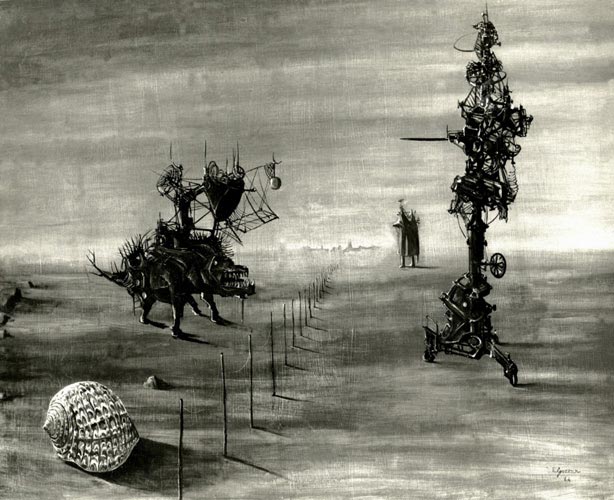

Our visual system is ingrained with the ability to detect and process faces rapidly and with efficiency, even with few details. A great deal of our everyday experience consists of similar feats of filling in perceptual and cognitive gaps, where we use what we know about the world to imagine what we do not know. The illusory triangle manages to look slightly whiter than the background, though it is in reality the same shade. We perceive the triangle, rather just than the three Pac-men that are actually present, because our brain overlays the shape of a triangle on an extremely limited field of data. The Kanizsa triangle illusion appears as a ghostly triangle partially superimposed on three circles at the triangle's vertices. For instance, the Gestalt Principle of Closure says that our perception will group individual elements as a whole (rather than consider them as separate from each other) if they seem to complete an entity. Various perceptual rules, such as the Gestalt laws conceptualized in the late 19th and early 20th centuries, govern the way our brains fill in incomplete information. This is a grand illusion that results from the joint action of the neural systems responsible for our vision and eye movements. High-resolution vision is limited to the center of our eyes-about a tenth of a percent of the entirety of our visual field-, but we perceive the whole visual field as a high-resolution, focused, perfectly formed image. Our brain makes up a large fraction of what we perceive. Illusory Contours and Filling-in Illusions in Dali's Art

Visual illusions, present in many of the painter's artworks, include numerous examples of perceptual completion and ambiguous images. Thus, Dali's artworks challenge the viewers' perceptions of reality and enable them to see beyond the surface. He understood that we create an ordered or disordered world from intermittent and incomplete retinal information processed by our mind's experiences, desires and apprehensions. Salvador Dali intuited that what we construe visually as reality is the product of the habits of the mind, more than of the eye. Factors such as brightness, color, shading, and eye movements, among other contributors, can powerfully affect what we see.

Many years before scientists began studying neuronal properties, artists devised multiple techniques to trick the brain into believing that a flat canvas had depth or that a sequences of brushstrokes was in fact a still life. Throughout history, artists and researchers have utilized illusions with the aim of understanding perception. Due to this disconnect between perception and reality, visual illusions exemplify how the brain fails to re-create the physical world, and provide vision scientists with substantial tools to apply to the study of the neural underpinnings of perception. When experiencing a visual illusion, we may see something that is not there in reality, fail to see something that is, or more generally see something different from what is there. Illusions are noted as the disconnect between physical reality and subjective perception ( Martinez-Conde and Macknik, 2010). Here we review the role of illusions in the art of Dali, focusing on the pieces displayed at the “Marvels of Illusion” exhibit. The exhibition displayed a number of paintings, prints and sculptures by Salvador Dali (1904-1989), a sixteenth century piece from the School of Arcimboldo that was on loan from the Ringling Museum, and interactive demonstrations and illustrative material. Petersburg, FL., from June 14 to October 12, 2014, offered visitors a unique perceptual and cognitive experience into the world of ambiguity and illusions. He had three children, Hussein and Ahmad and Magdy.The “Marvels of Illusion” exhibit, shown at The Dali Museum in St.

Reda was the simple funny master of the alley who was popular and loved by many fans across the Arab world.
REDA ART OF ILLUSION SERIES
Of his famous TV series are: My Next Door Neighbor and Antar Beekya. Among his significant roles is his role in Nagueeb Mahfouz’s “Khaan al-Khaleely”. Since then he was attached and stuck to this role with all of its varieties not only in films but also in both TV and radio series like “Reda Bond” which was turned into a film because of its great success. His breakthrough role was as the master of the alley in Nagueeb Mahfouz’s play Medakk Alley. He worked as petroleum engineer after his graduation from the faculty of Engineering, and then started acting in the 1940s during his study at the High Institute of Dramatic Arts where he played small roles mainly of a. Mohamed Reda was an Egyptian actor from Assiut (Upper-Egypt).


 0 kommentar(er)
0 kommentar(er)
